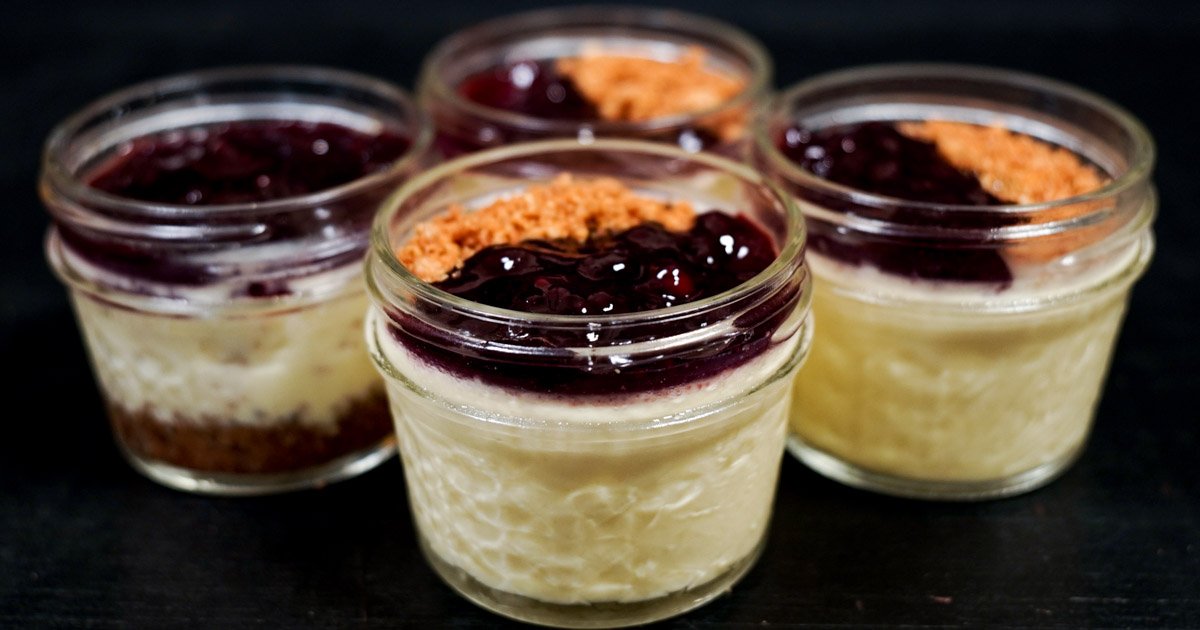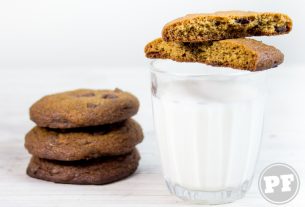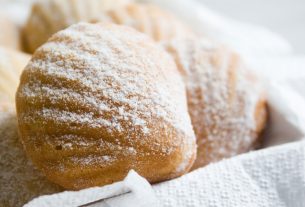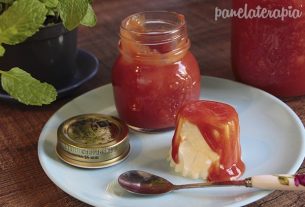It may not seem like it, but cheesecake is one of my favorite desserts. And now it has a sous vide version, that is, the gourmetized and modern bain-marie.
After years of not using my thermocirculator (it’s a Sansaire old), the spirit and desire to put it to use has diminished. Since then I have made the Best Pudding and Best Brigadeirão in the World within the lode that no one will do.
I was wondering what other dessert could be made using the equipment… until I remembered the cheesecake what “it needs” in a double boiler. I mean, it depends on your version: some use it and others don’t.
In a very generic way and from what I’ve seen in the kitchen, for me: cheesecakes baked in a bain-marie in the oven look like a more velvety texture because of the lower temperature. Meanwhile, dry roasts can be more firm and dense. But it’s all a matter of how you want your candy to turn out.
Generally, I don’t like cooking in a water bath in (my) oven: it takes too long. It takes a lot longer than sous vide, which by nature also takes longer. But in my case, sous vide is faster. Amazingly.
The only oven I liked using with a water bath was commercial combi oven which had a bain-marie function. It was all incredible and wonderful, 10 out of 10. But there’s no way at home, right? (I mean, if you had the money for it, anything is possible)
And not: Using a conventional oven, even at a low temperature, will not be the same.. You will get a result, but it won’t be the same. The type and propagation of heat is different, one uses air and the other water. Not to mention the precise temperature control, this is the great difference of sous vide.
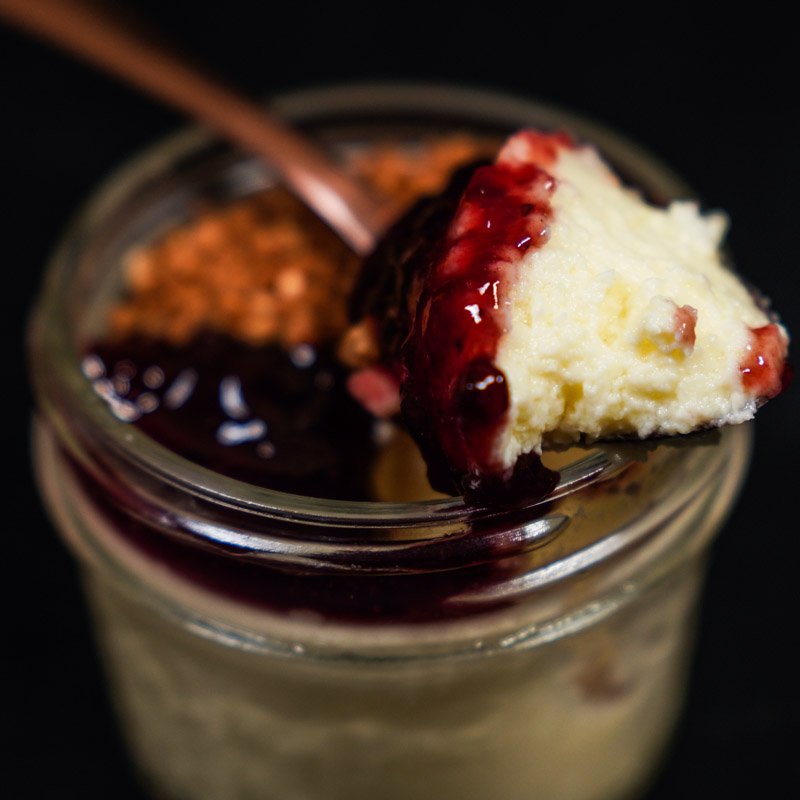

What’s different about my cheesecake?
My version of cheesecake is close to the New York style with some changes that I like:
- Use yogurt e lemon juice in the cheesecake base cream to give it a more sour-acidic taste than cream cheese also has. Some American recipes use sour cream for that.
- Speaking of sour cream, it also increases the fat content. But as in Brazil there is practically none, this addition of fat causes milk cream same.
- The overall flavor is cream cheeseHowever, I like to put vanilla. I think it goes very well with this dairy flavor and the sour taste of lemon.
- This sous vide version has a lighter and creamier texture, it is not dense and heavy. Personally, that’s how I like it.
I made it in individual portions in glass jars. And before you ask: pots are not officially sold in Brazil, it is from the brand BallsI received it as a gift and it holds around 113mL.
The best cheesecake in the world
Makes: 9 portions (about 100g)
Crispy farofa
- 100 g oat and honey cookie
- 50 g butter without salt
Cheesecake
- 300 g cream cheese (traditional; room temperature around 25-30ºC)
- 150 g unflavored yogurt (ambient temperature about 25-30ºC)
- 100 g fresh/pasteurized cream (35% fat; room temperature about 25-30ºC)
- 3 eggs (ambient temperature about 25-30ºC)
- 125 g crystal Sugar
- 1 Sicilian lemon (zest)
- 10 g lemon juice
- 10 g vanilla extract (or 5g essence; see note)
- 3 g refined salt
Red fruit topping
- 150 g red fruit jelly
1 cup: 250mL | 1 tablespoon: 15mL.
Crispy farofa
- Heat the oven to 180ºC and line a baking tray with baking paper. Reserve.
- Melt the butter in the microwave or directly on the heat, set aside.
- Process the biscuit until it turns into crumbs. Add the melted butter and pulse until it resembles wet sand. This step of adding the butter can be done in a separate bowl as well.
- Spread the crumbs over the prepared baking tray and place in the oven.
- Bake at 180ºC for 10-15 minutes or until the farofa is lightly golden and has a roast aroma. This step can also be done in a non-stick pan, stirring constantly just to toast the farofa. Reserve.
Cheesecake
- Heat water with a thermocirculator (sous vide equipment) in a container that holds the cheesecake containers. I used a 12-liter pan, but a container that retains heat is ideal.
- To speed up the process of heating the water, I heated part of it on the stove until it was lukewarm and then added it to the 12L pan. The thermocirculator was set to 85°C to compensate for heat loss when the cheesecake was added, at which point it was set again to 80°C.
- This is one of the few recipes that I recommend that the ingredients are at room temperature (25-30ºC) or not that cold. It makes mixing easier and as they are not beaten for a long time, they end up not heating up which would make mixing easier.
- Beat (or process) cream cheese, yogurt, cream, eggs, sugar, salt, lemon zest (remove the zest before squeezing the lemon), lemon juice and vanilla until well mixed without any pieces of cream cheese, about 1-2 minutes. The suggestion is to use a processor.
- Let it rest for 15 minutes. Then, pass the mixture through a fine sieve.
- Distribute around 90-100g of the mixture into each glass jar. There has to be some space left to fit the cover later. If you use Ball-style jars (Mason Jars) with their normal lids, they should be semi-closed: as if there were a few millimeters left for bubbles to escape.
- If you want to assemble the pots like cheesecake and add the crumbs to the base, you can do that too. Just be warned that it will become soft and lose its crunchiness, after all, cheesecake batter is moisture.
- Place the glasses in the water bath with the thermocirculator, then adjust the temperature to 80°C. Cook for 60 to 90 minutes: cooking time may vary. The longer: the firmer the cheesecake will be; the less, the creamier. In my version, I cooked for 70 minutes.
- Remove from hot water, let cool for 20 minutes at room temperature. Then, cool in the refrigerator for at least 6 hours. Ideal from one day to the next.
- When serving, I added the red fruit jelly and biscuit crumbs.
- glass pot: the pots used in the photos are not sold in Brazil, they are from the American brand Ball. It’s the Regular Mouth model with 4 ounces (about 113mL) and I received it as a gift.
- Alternative glass jar: I didn’t test this recipe itself, but you can use a glass jar of regular jam/preserve.
- Sicilian lemon: the volume can vary, if you want more or less citrus.
- Vanilla: if you can use vanilla extract or even the bean (1/2 bean is enough), it will be better; However, it won’t be bad with the essence. And if your extract is strong, you can add less than 10g.
- Cream cheese: can be from any brand.
Portion: 100g | Calories: 370kcal (19%) | Carbohydrates: 32g (11%) | Protein: 5g (10%) | Fat: 25g (38%) | Saturated fat: 14g (88%) | Polyunsaturated Fat: 2g | Monosaturated Fat: 7g | Trans fat: 0g | Cholesterol: 115mg (38%) | Sodium: 309mg (13%) | Potassium: 124mg (4%) | Fiber: 0g (1%) | Sugar: 24g (27%) | Vitamin A: 855IU (17%) | Vitamin B2: 0mg (12%) | Vitamin C: 2mg (2%) | Calcium: 74mg (7%) | Ferro: 1mg (6%)

Sign up for our newsletter and stay up to date with exclusive news
that can transform your routine!
Warning: Undefined array key "title" in /home/storelat/public_html/wp-content/plugins/link-whisper-premium/templates/frontend/related-posts.php on line 12
Warning: Undefined array key "title_tag" in /home/storelat/public_html/wp-content/plugins/link-whisper-premium/templates/frontend/related-posts.php on line 13

